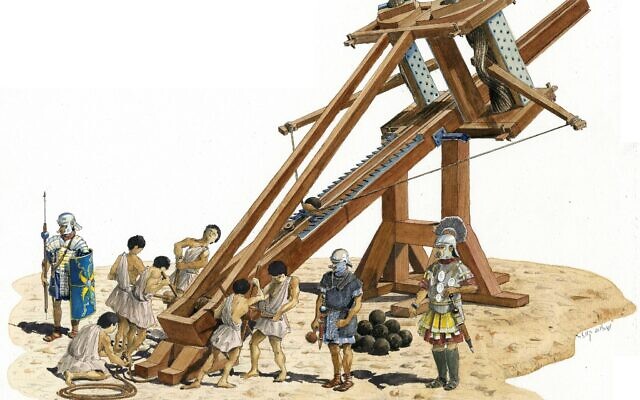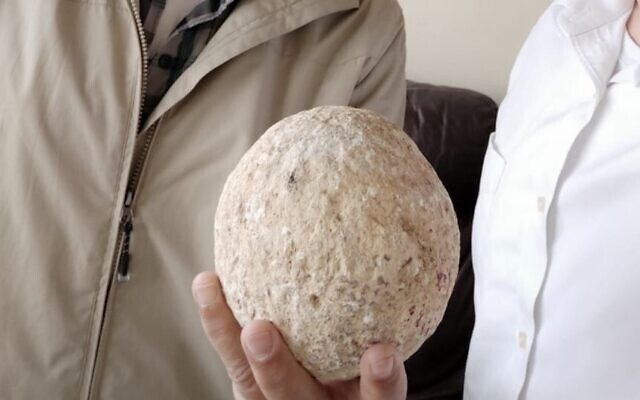TEL AVIV – An Israeli man returned a 2,000-year-old catapult bolt to the Israel Antiquities Authority some 15 years after he took off with it while visiting the archaeological site of the Jerusalem Walls National Park in the City of David, saying he wanted to clear his conscience before the end of the world.
“The time has come to clear my conscience. It feels that the end of the world is near,” the remorseful man said, according to an Israel Antiquities Authority press release on Monday.
The anonymous man didn’t return the artifact, also known as a ballista stone, directly but used a go-between, Moshe Manies, who agreed to keep his identity a secret.

Ballista stones from the City of David Clara Amit, Israel Antiquities Authority
The original theft occurred when two rebellious youths touring City of David site close to the Old City of Jerusalem came across the ballistae, which had been catapulted at fortifications, Manies said.
“One of the boys took one of the stones home. Meanwhile, he married and raised a family, and told me that for the past 15 years the stone has been weighing heavily on his heart,” Manies wrote in a Facebook post.
“And now, when he came across it while cleaning for Passover, together with the apocalyptic feeling that the coronavirus has generated, he felt it was time to clear his conscience, and he asked me to help him return it to the Israel Antiquities Authority,” Manies added.
Ballistae are a form of ancient weapons used in the besiege of cities. The stone would be mounted on the ballistae and catapulted onto forces standing on fortress walls, the IAA’s release said.

Courtesy: Uzi Rotstein, Israel Antiquities Authority
“The ballista stones which were uncovered at the City of David are most likely connected to the harsh battles between the besieged residents of Jerusalem and the soldiers of the Roman Legion, from around 70 CE – the year of the destruction of Jerusalem,” the IAA’s Jerusalem Region Archaeologist Dr. Yuval Baruch said.
“Additional stones of this type have been unearthed in Jerusalem, in, among other places, the area of the Russian Compound near the estimated path of the Third Wall, which was the external wall of Jerusalem during the time of the Second Temple. In the excavations of the Israel Antiquities Authority there, a battlefield was uncovered, with tens of ballista stones scattered on the ground,” Baruch added.

Illustration of a 2,000-year-old ballista. (Shalom Kveller, courtesy of the City of David Archives)
A commenter on Manies Facebook post tagged Uzi Rotstein, an inspector in the IAA’s Theft Prevention Unit, who then arranged for a rendezvous for the return to take place.
“Disconnecting an artifact from its archaeological framework by its removal negatively impacts the research and the ability to piece together its historical puzzle. We commend the return of the artifact and appeal to anyone who has taken an archaeological artifact, to take a weight off their heart and return it to the State Treasury,” he said.
“These artifacts, which are thousands of years old, are our national treasure. They tell the story of The Land and of who resided here before us, and should be documented and displayed,” said Rotstein.

COMMENTS
Please let us know if you're having issues with commenting.